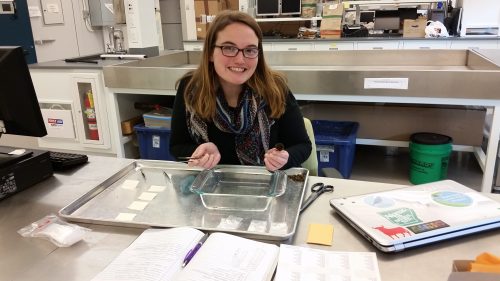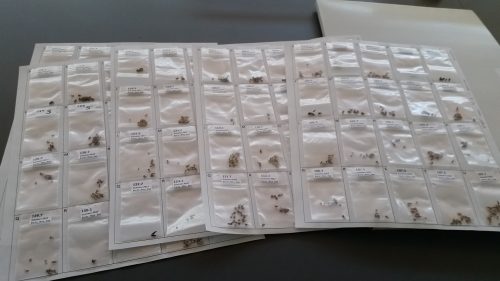Hi Flog following!
I’m excited to have worked in the Echinacea Project’s lab at the Chicago Botanic Garden for the past few days. While I was here, I worked on the seed set portion of my summer 2017 REU project (which I have now named Barto’s Nice Experiment), and I caught up with many friends from the field season. It’s definitely been a fun week for me in the Chicago area!
At the end of the summer, the team collected my experimental Echinacea heads from the Nice Island remnant in Minnesota after I left. When I came to the garden with Tracie on Thursday of last week, I began dissecting them. I started by separating all rows from each other, but I quickly realized I was only able to accurately distinguish the odd rows (which had painted bracts). To work efficiently, I categorized all achenes into 4 groups based on where they came from in each head: Row 1, Row 3, Row 5, Row 7, or Even Row. Between Thursday, Friday, and the first half of today, I cleaned my 21 experimental heads. Each of the odd rows were put into their own baggie and attached to an x-raying sheet. With the guidance of Tracie, I was able to capture images that show the fullness of all of my odd-row achenes. With this data, I can create a GLM in R like I did with my pollination data from the summer and model which experimental variables (row within the capitulum, style age, and pulse/steady pollination treatment) affected the seed set in my experiment.
For now, I am going to count the full/partially full/empty achenes in my x-rays and get ready to return to Arkansas tomorrow.

Ashley working in the Echinacea Project lab at the Chicago Botanic Garden.

Setting up the achenes for x-raying! Each of the baggies here has one row’s worth of achenes.

Final x-ray product for one row of achenes.

Leave a Reply